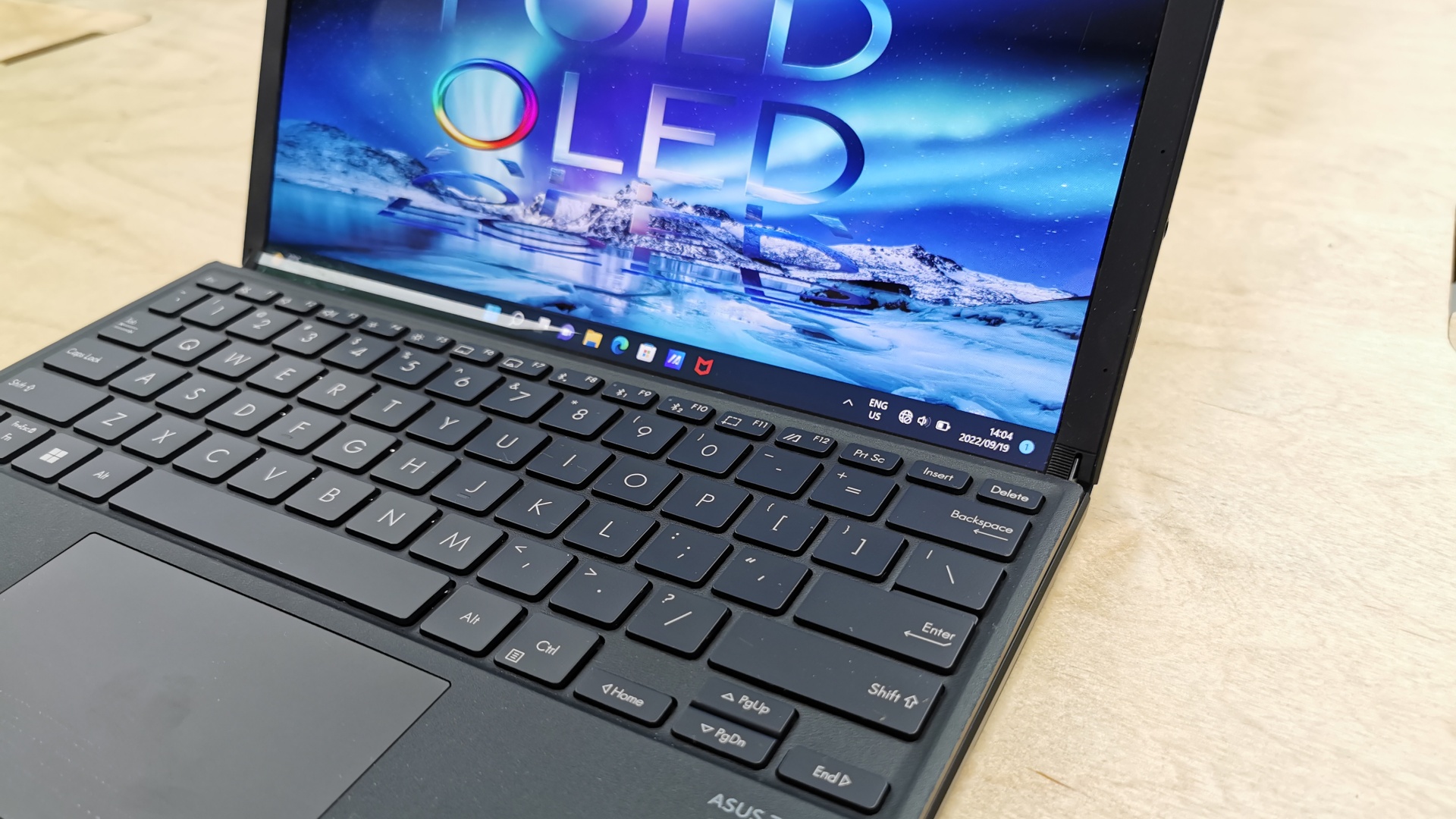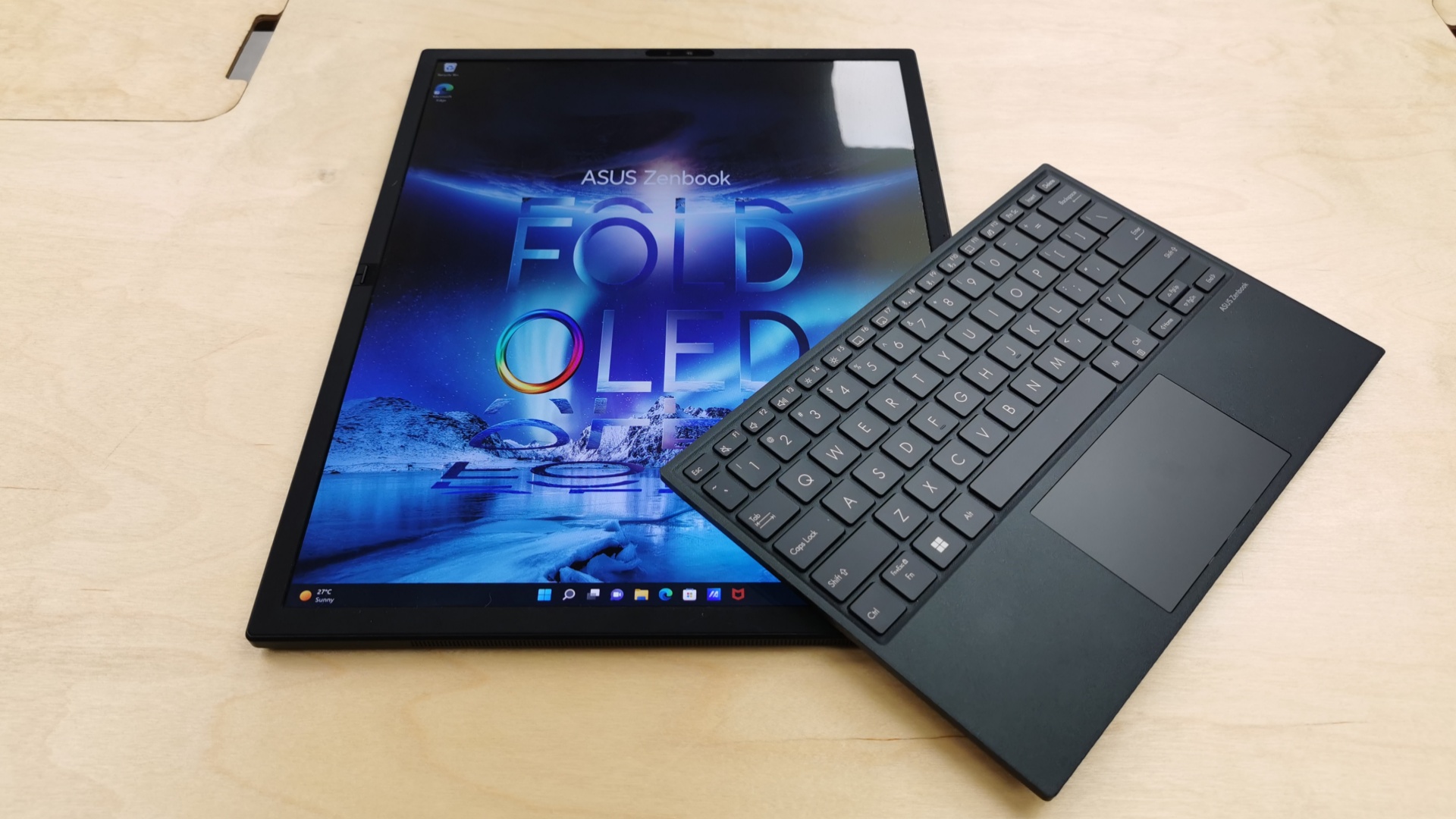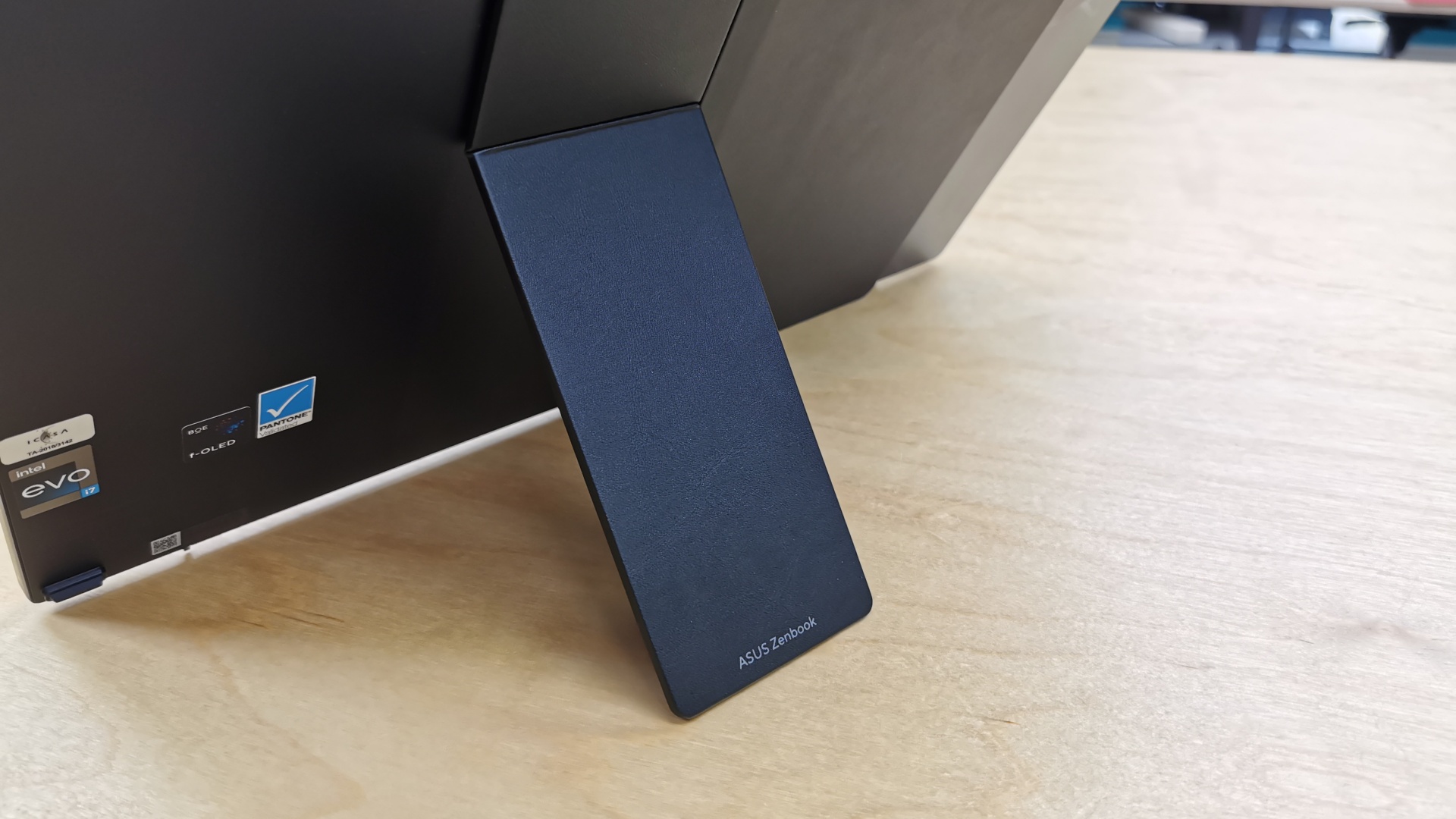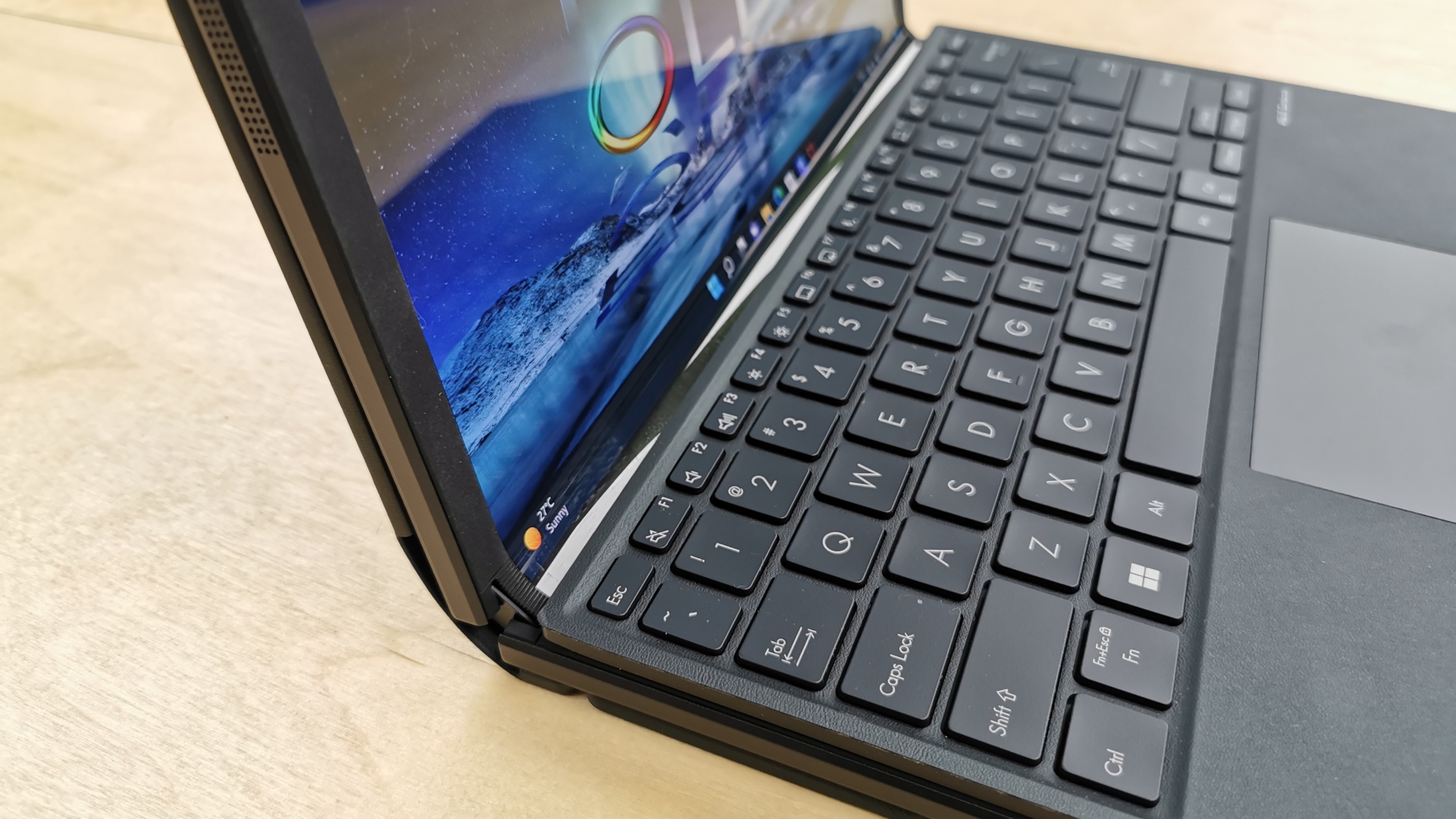We are now in the age of foldables. In recent years only a handful of companies tinkered with this technology, but 2022 has seen more foldable devices being unveiled than ever before.
Leading this category at the moment is Samsung, which is already several iterations deep. Huawei too is bringing more foldables to the market despite its ongoing Google issues and now a couple of notebook makers are entering the fray too – Lenovo and Asus.
It is the latter which is the first to officially bring a foldable device to our shores in the form of the ZenBook 17 Fold OLED.
Unveiled at IFA 2022 earlier this month, the device is already available to purchase in South Africa, starting from R64 999 (RRP), as Asus is looking to waste no time in becoming the Samsung of foldable notebooks both in SA and across the globe.
Whether it can do so remains to be seen, but we have spent the past two weeks with the Zenbook 17 Fold OLED to gain a better understanding of its innovative display, the different modes it can be used in and whether it is indeed worth gambling on for close to R70k.
Here are our thoughts on the latest offering from Asus.
Proper flex
We start with design and our inner cynic could easily categorise the Zenbook 17 Fold OLED as a device made to flex on others. Whipping out a foldable notebook in front of a client or the business lounge before boarding a flight will no doubt attract inquiry.
Each time we used the 17 Fold OLED around others, one of three questions were asked. The first two were based on genuine curiosity – oh, what it that? and can I see?
The third, and one element we will speak about later on in this review was a little more critical – who is this for?
In general though the design and applications of the 17 Fold OLED are intended to showcase what is possible with a foldable notebook.
Once unboxed, the first thing you notice about the device is its sheer weight. The device tips the scale at 1.50kg and while that it is not the heaviest notebook we have reviewed to date, the expectation before handling the device to actually picking it up, makes the 17 Fold OLED feel very hefty indeed.
That heft does make things rather sturdy, which is nice, but can also make the notebook a little unwieldy, especially when it comes to opening and closing unfolding and folding it. Given that this device costs close to R70k, the desire is to be delicate with it, but as we have found over the course of our two-week review period, the 17 Fold OLED is made to be handled.
As for the choice of materials, the mix of faux leather for the central portion of the rear of the notebook is nice. Apart from giving you something to hold onto when folded up, it also houses the kickstand for the notebook’s display mode.
The bezels, while slim, are rubberised, and a little tacky to the touch. This may present a problem when cleaning or wiping down the 17.3″ (2560×1920) display as debris and fine fibres often get caught on this portion of the device. It’s unclear if metal could be used here, as found in much of the chassis, but it is an issue that Asus does highlight in its tips/tricks guide for the device.
Said guide also makes mention of not holding the 17 Fold OLED at its two hinge points, as this is the most delicate point of the device. The same goes for the display itself. While it supports touch functionality, you probably aren’t going to want to use a stylus on the plastic-y screen, especially if you have a tendency to exert too much pressure (as we do).
Like Samsung’s foldables, we expect this to be addressed in future devices, when the display technology has evolved and become a little more robust.
As for the folding itself, like all foldables we have encountered to date, there is a seam on the 17 Fold OLED. To Asus’ credit, it is not as noticeable as it is on smartphones, but can be seen, particularly depending on which angle to look at the display from.
Front on though, it is not as noticeable and definitely less of an eyesore than on some of the foldable phones we have reviewed.
Made for modes
Now onto that third question – who is this for?
Firstly someone with cash to splash and a desire to stunt on their co-workers. That is the cynical answer. Looking at it more objectively, there is a great deal of flexibility to the ZenBook 17 Fold OLED.
Convertible notebooks and tablet hybrids have been around for a long time now, but this device might be the first truly convertible notebook.
The ability to use it as a regular notebook at 12.5″, either with an on-display keyboard or the magnetically attached one provided in the box, as well as unfolding it to 17.3″ and propping up the notebook to function as a monitor makes a lot of sense.
This especially as we have grown use to the larger screen real estate afforded by a monitor during the pandemic and working from home. The Zenbook 17 Fold OLED can do both, and do so without needing to tether the device to power either.
It is this ability to support multiple working modes and the high level of portability where the Asus Zenbook 17 Fold OLED starts to shine. From that perspective, we get exactly what Asus was going for, and to be honest we are fans of it.
The problem comes in when we start to consider the asking price. R70k is simply too large an ask at this stage. When we mention the price to others, the first response is always what else they could buy for that money, or indeed how many multiples of something else they can buy.
Just like superhero movies ask their audiences to suspend belief in order to enjoy the viewing experience, the Asus Zenbook 17 Fold OLED asks potential customers to forget all notions of price in order to bring its own experiences to life.
Unfortunately it is an ask that few can afford to make at the moment. That said, we are intrigued to see what future iterations will hold and whether this technology can filter down to a better price point.
Some considerations
It is worth pointing out areas where the 17 Fold OLED can improve. The most immediate is the aforementioned detachable keyboard.
Here it delivers a solid enough typing experience, and one that is far more satisfying that the on-display option, but the trackpad was frustrating at best.
Whether this requires a refinement in terms of connectivity to deal lag is unclear, but there was not the rapid response we were hoping for. So much so, that we might suggest opting for a standalone wireless mouse when the device is setup in its monitor mode.
We also need to touch on the performance. Battery life is impressive given the size of the display on offer and the technology that needs to be powered here. According to the Asus the 75WHrs battery on offer is designed to yield up to 9.5 hours of use (video playback).
In our experience the figure was closer to eight hours, but we were pushing screen brightness to its maximum and running more than a few benchmark tests during that time. As such, it should make it through a full work day before needing another charge.
As for the processor performance, we were surprised to see the Zenbook 17 Fold OLED running a 12th Gen Intel Core i7-1250U processor.
This is not a sub-par chipset, but with a clocked speed of 1.1Ghz, we were hoping for a little more grunt on a foldable notebook that costs almost R70k. Added to this is Intel Iris Xe graphics, 16GB LPDDR5 RAM and a 1TB M.2 NVMe PCIe 4.0 SSD.
In our benchmarking, the 17 Fold OLED performed ably enough, averaging 3 246 on Cinebench R23. As such, this device is solid enough for the enterprise space, but may not be suited for creators wanting to do editing work in particular. For more general creative work, the 17 Fold OLED feels up to the task.
Lastly, the lack of USB 3.0 ports might be an issue for some. Much like some recent MacBook models, you will need to embrace the dongle life depending on what you want to plug into the 17 Fold OLED, with only two USB Type-C Thunderbolt 4 ports and 3.5mm headphone jack present.
Final verdict
The Asus Zenbook 17 Fold OLED is an impressive piece of kit and certainly makes a solid case for itself when it comes to highlighting the multi-functionality of foldables in the notebook space. The big issue right now, which is the same one for all foldables at the moment, is price.
At R64 999 (RRP), we cannot in good conscious recommend buying such a device over more affordable options that do not boast the foldable capabilities.
They say the first one through the wall gets the most damage. That may be true of the Asus Zenbook 17 Fold OLED, and only once this technology becomes easier on wallets, can we start making them viable recommendations.
For now this device, while cool, is simply not cool enough to part with R70k. If you can afford to make such purchases, however, good on you.










